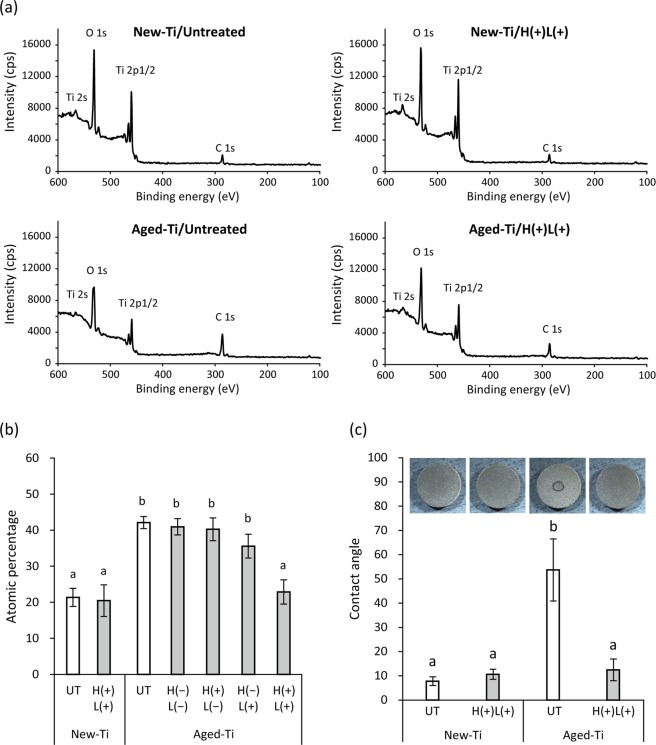Figure 2.
Surface conditions of newly prepared (New-Ti) and aged titanium (Aged-Ti) discs treated with or without H2O2 photolysis. (a) Representative X-ray photoelectron spectroscopy spectra. (b) Atomic percentage of carbon on titanium specimen surfaces. (c) Contact angle of 0.4 µL pure water droplet on titanium surfaces and photographic images of the spread of the droplet. New-Ti and Aged-Ti were immersed in 3% H2O2 and irradiated with 365 nm LED, either alone or in combination denoted as H(−)L(−), H(+)L(−), H(−)L(+), or H(+)L(+), for 5 min. Aging increased the amount of carbon on titanium discs, converting the hydrophilic intact titanium surface to hydrophobic. H(+)L(+) treatment significantly reduced the amount of carbon on Aged-Ti and recovered surface hydrophilicity. Values and error bars in (b,c) indicate the mean and standard deviation, respectively [n = 4 for (b) and n = 6 for (c)]. Different letters above the columns in (b,c) refer to significant differences (p < 0.01) between different groups. UT, untreated; H(−)L(−), treatment with pure water in a light-shielding box; H(+)L(−), treatment with 3% H2O2 in a light-shielding box; H(−)L(+), 365-nm LED irradiation of sample in pure water; H(+)L(+), 365-nm LED irradiation of sample in 3% H2O2.

